I use frama-c tool to analyse the code below.
int main (int argc, char *argv[])
{
int i,a;
for (i = 0; i < 100; i += 1)
{
a=0;
if (a==0)
{
continue;
}
else
{
break;
}
}
return 0;
}
the cmd is
frama-c -pdg -dot-pdg graph main.c

My question is about the control dependence. what's the circle node means? I try to explain the "while" node, maybe it stand for one time loop , because a loop start from "i<100",so there a control dependence ("i<100" ------o "while" ). Is what I guess right ? but what is the "break" node mean? I guess that node "goto __Cont;" is related to the "break;" statement in the "else" block.
I think I have no clear abstract model in my head for understanding the control dependence completely and accurately . Would you help me or give me any suggestion ?. Many Thanks in Advance Tao.